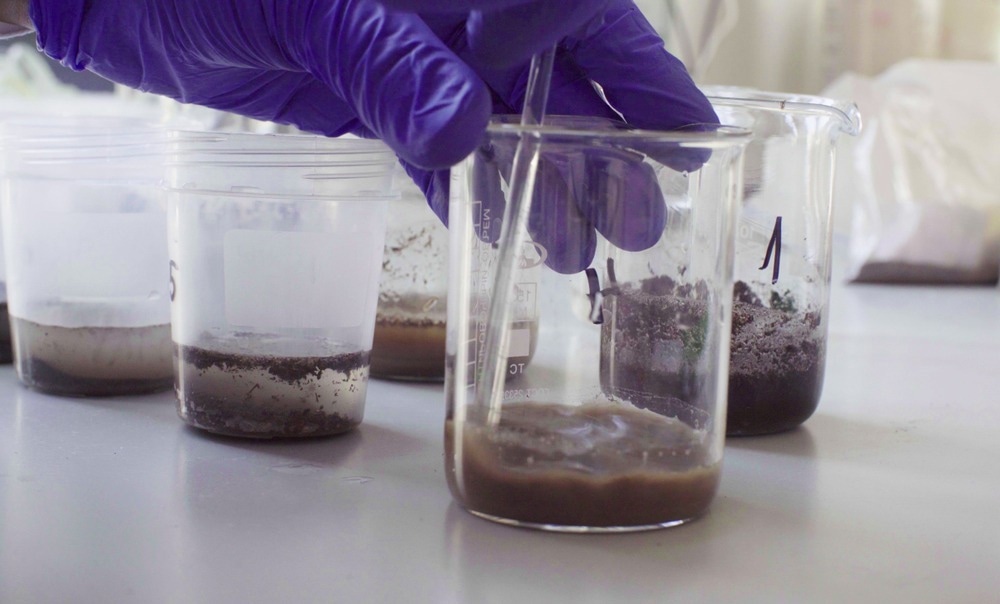Environmental contaminants originating from anthropogenic sources are now ubiquitous in just about every habitat on earth; microplastics, persistent organic pollutants, black carbon, and nitrate-based contaminants are all found deep within glaciers or ocean sediment, for example. This article will discuss the major methods of environmental sample collection and analysis.

Image Credit: VE.Studio/Shutterstock.com
Environmental Sample Collection and Preparation
Firstly, environmental samples must be collected from their location of origin with minimal disturbance and opportunity for the introduction of contaminants. Sample collections are planned well before fieldwork in terms of sample type and quantity, the required containers, and specifically how they will be collected before chemical or physical analysis in the lab.
Any further sample requirements during storage and transport should also be considered at this stage, such as refrigeration, protection from light, oxidation, microbial degradation, and any adverse chemical reactions that may take place and would alter the results of later analysis. For example, physical processes such as volatilization and adsorption could contribute to sample loss or contamination, and thus, selecting appropriate containers and storage conditions ensures sample integrity.
Various sampling methods may be employed to assist in determining where samples should be collected while in the field, largely to ensure non-bias sample collection and treatment of subsequent data. Once returned to the lab, samples generally undergo some degree of preparation to facilitate analysis, helping to ensure consistency between geographically and temporally disparate samples. For example, solid samples such as soil may be sieved and mixed to homogenize the sample and aid in quantification, and the water content set to a specific level to ensure consistent weighing between samples.
In some cases, compounds known to be present in the sample that may interfere with the accurate quantification of the compound of interest may be intentionally removed or separated, or otherwise, this process may be more practical to perform in reverse, wherein the specific analyte of interest is extracted to undergo further analysis. Methods such as liquid-liquid or solid phase extraction or various forms of chromatography can be used to achieve compound removal or separation from environmental samples.
How is Chromatography Used in Environmental Sample Analysis?
Chromatography is extensively utilized to analyze contaminants in environmental samples, predominantly for separating mixtures. Effective separation allows the most appropriate handling and analysis of specific contaminants or other components of the environmental sample, which may have specific needs in terms of solubility or preparation.
A wide variety of typical analytical techniques of molecular identification can then be utilized to confirm that the expected compound has been separated from the mixture, such as infrared spectroscopy or nuclear magnetic resonance. Accurate weighing of the collected components of environmental samples using techniques such as thermo-gravimetry allows the concentration of any particular analyte within the environmental sample to be inferred.
How is Spectroscopy Used in Environmental Sample Analysis?
Several spectrometry methods are also widely utilized in environmental sample analysis, particularly inductively coupled plasma-atomic emission spectroscopy (ICP-OES), in which the sample is rapidly heated to extreme temperatures using an inductively coupled plasma torch.
A peristaltic pump and nebulizer feed the sample through the torch, where electrons belonging to atoms within the sample are excited to higher energy levels. Eventually, the electrons decay to their orbit of origin, releasing the energy difference in the form of light, the wavelength of which is highly specific to the atom. In this way, the atomic composition of a sample can be determined with high accuracy across a wide range of concentrations.
Multiple analytes can be investigated simultaneously in this way by employing a multi-element calibration standard against which the concentration of elements within the sample can be determined. Inductively coupled plasma torches can also be coupled with mass spectrometry apparatus (ICP-MS), wherein the ionic molecular fragments generated by passage through the plasma torch are fed into a chamber with a charged far wall. Electrostatic interactions draw the ions toward the wall at a speed dependent on molecular charge and mass.
ICP-OES provides information relating to elemental concentration, which is much more useful in the identification and quantification of organic pollutants. On the other hand, ICP-MS maintains and interprets molecular fragments based on size and charge, which is more useful in assessing heavy metal contamination.
How is Electrochemistry Used in Environmental Sample Analysis?
Electrochemical methods of analysis may also be useful in environmental contaminant detection and identification, such as voltammetry, potentiometry, and conductometry. In particular, heavy metal contaminants such as zirconia (ZrO2) are detectable using electrochemical methods, often using oxygen detection cells that exploit the enhanced mobility of oxygen ions from the metal center under heating. Many metal and organic contaminants exhibit a range of oxidation states and unique electrochemical signatures that can be inferred via electrochemistry.
In terms of material cost and time investment electrochemical techniques may be amongst the most favorable methods of analysis of environmental samples for common contaminants, demonstrating great versatility and the ability to re-use probes and other apparatus almost indefinitely. However, large initial start-up costs and poor identification of rare and low concentration contaminants limit application.
Sources
Draghici, C. & Manciulea, I. (2019). ENVIRONMENTAL SAMPLING AND ANALYTICAL MEASUREMENTS.
Sampling and Analysis of Environmental Chemical Pollutants (2018). E. Popek (2nd), Elsevier: CA, USA. www.sciencedirect.com/.../sampling-and-analysis-of-environmental-chemical-pollutants
Beard, D. B., et al., (2022). Anthropogenic contaminants in glacial environments I: Inputs and accumulation. Progress in Physical Geography: Earth and Environment, 46(4). https://journals.sagepub.com/doi/10.1177/03091333221107376
Further Reading
Last Updated: Aug 25, 2024